
13 Tips for Performing a Nursing Health Assessment of the
4. Describe the functions of cartilage, muscles, ligaments, tendons, fascia, and bursae. 5. Link age-related changes in the musculoskeletal system to the differences in assessment findings. 6. Select significant subjective and objective data related to the musculoskeletal system that should be obtained from a patient. 7.
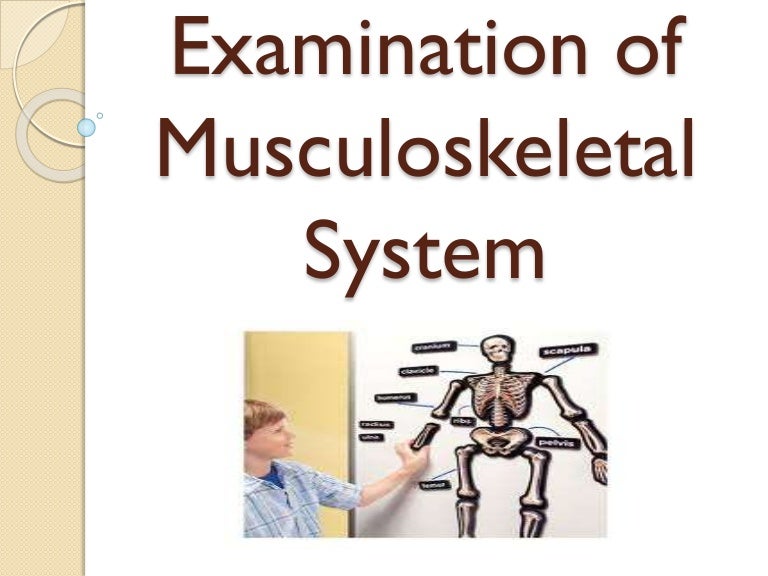
examination of Musculoskeletal system
To perform an examination of the muscles, bones, and joints, use the classic techniques of inspection, palpation, and manipulation. Start by dividing the musculoskeletal system into functional parts.
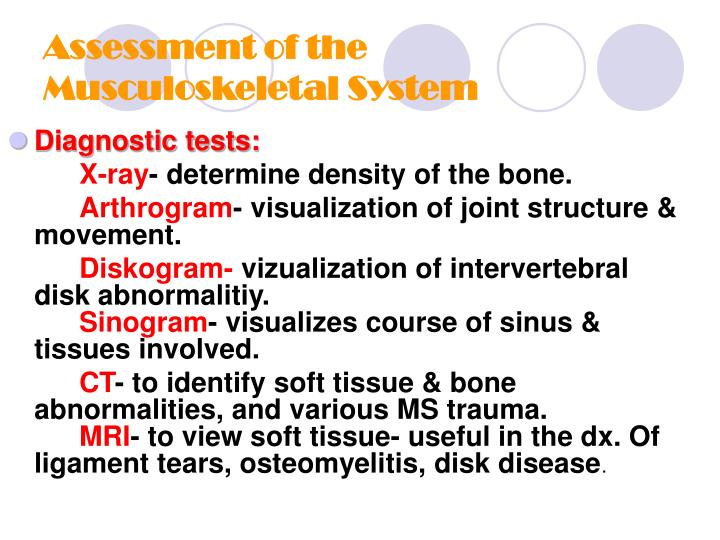
PPT Assessment of the Musculoskeletal System PowerPoint Presentation
The musculoskeletal system (MSK) forms the structural components of the body; muscles, bones, joints, and connective tissues like tendons and ligaments surrounding these structures. The musculoskeletal examination is composed of several clinical tests. Broadly, a musculoskeletal system exam could classify as a:
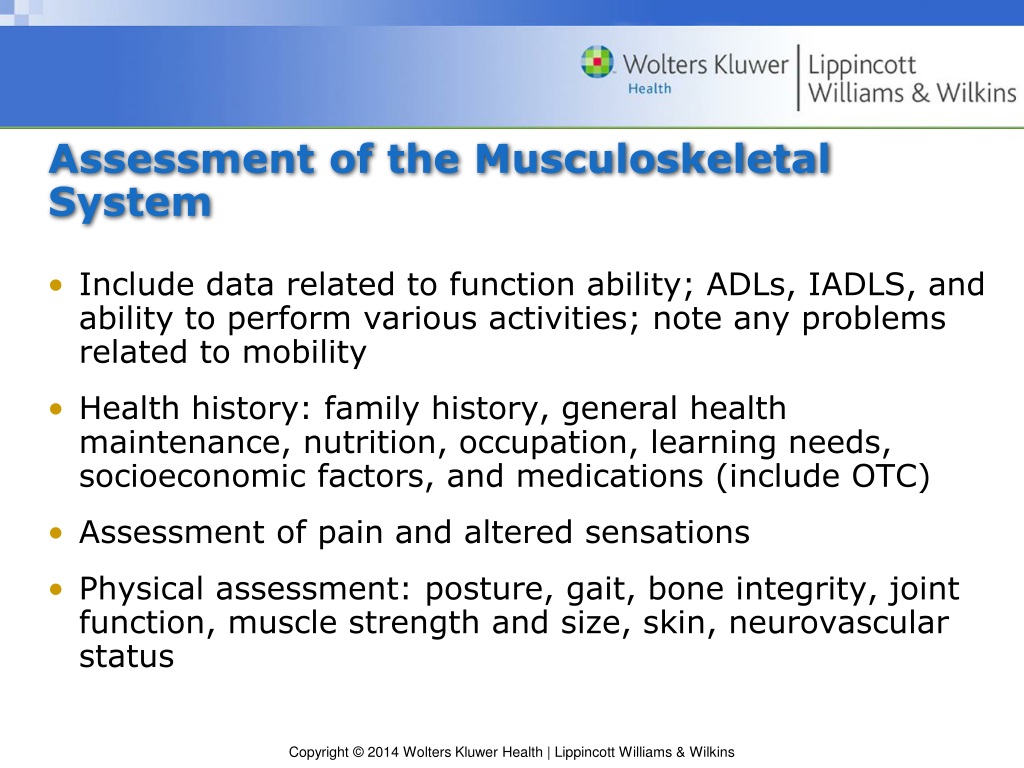
PPT Chapter 40 Assessment of Musculoskeletal Function PowerPoint
Laboratory: Assessment techniques of neuro, motor, musculoskeletal, sensory. This page titled 2.12: Assessment of Musculoskeletal and Neurological System and Sensory System is shared under a CC BY-NC 4.0 license and was authored, remixed, and/or curated by Pearline Okumakpeyi via source content that was edited to the style and standards of the.

Musculoskeletal Nursing Assessment MUSCULOSKELETAL SYSTEM NURSING
An assessment of the musculoskeletal system includes collecting data regarding the structure and movement of the body, as well the patient's mobility. Let's begin by reviewing the anatomy of the musculoskeletal system and common conditions a nurse may find on assessment.

Assessment of musculoskeletal system YouTube
Sample focused interview questions to include during a subjective assessment of the musculoskeletal system are contained in Table 13.4.1 13.4. 1. The first question of the musculoskeletal interview is based on the six most common symptoms related to musculoskeletal disease. [1]
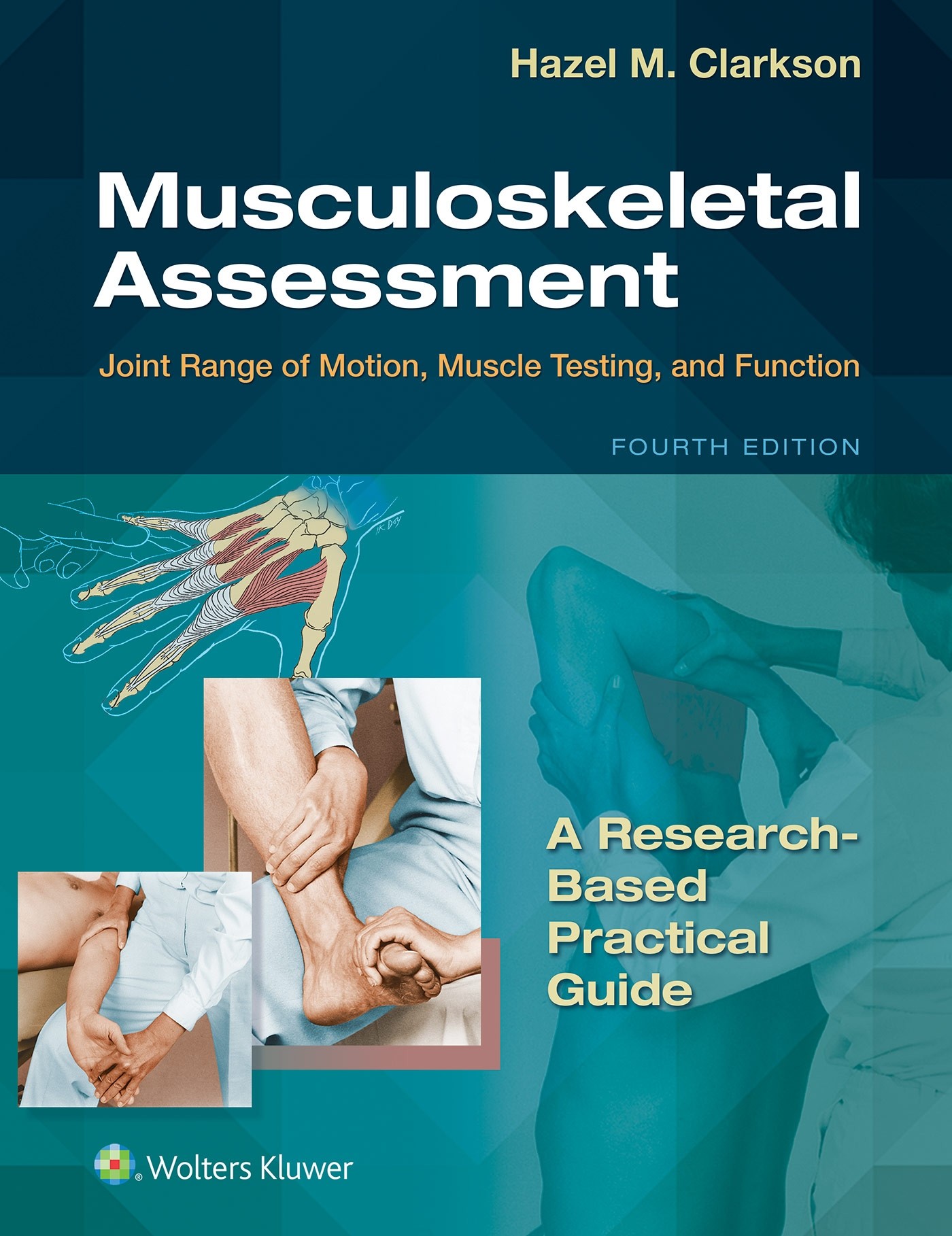
Musculoskeletal Assessment 4E Joint Range of Motion, Muscle School
Step-by-step Assessment of the Musculoskeletal System Safety considerations: Perform hand hygiene. Check room for contact precautions. Introduce yourself to patient. Confirm patient ID using two patient identifiers (e.g., name and date of birth).

PPT Assessment of the Musculoskeletal System PowerPoint Presentation
The musculoskeletal system constitutes a demanding part of the physical examination in terms of both knowledge and time. The skillful examiner focuses this critical task through information obtained in a careful history.
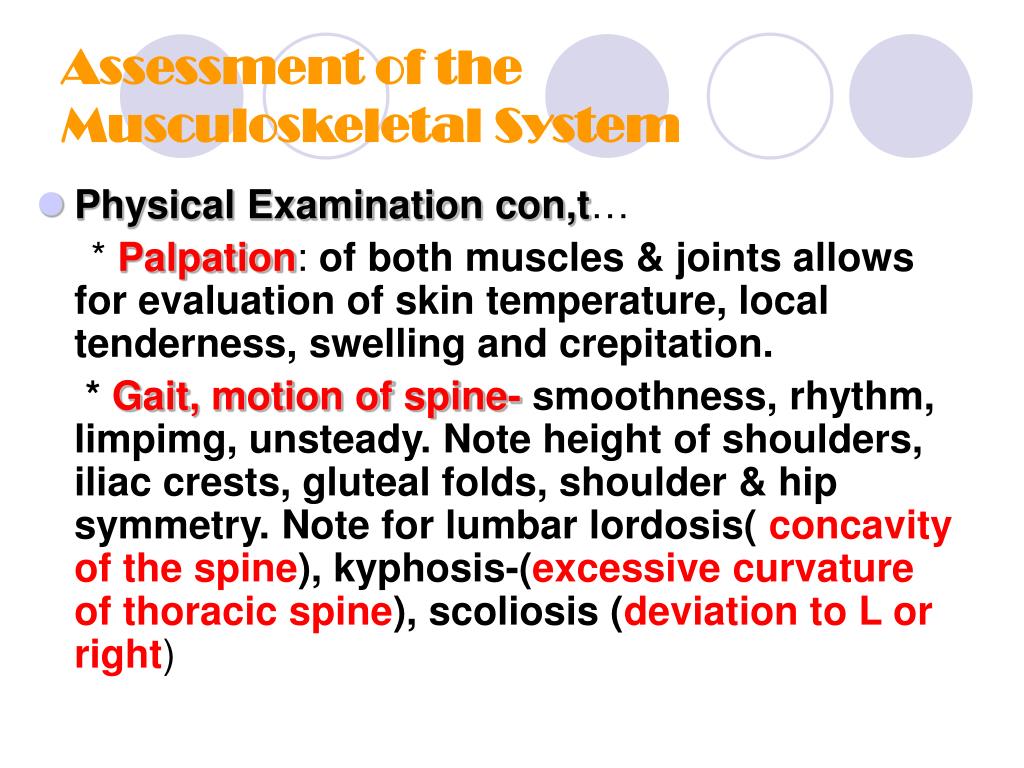
PPT Assessment of the Musculoskeletal System PowerPoint Presentation
The musculoskeletal system (MSK) is important to assess as it is considered the body's framework and supportive structure. It has additional roles such as hemopoiesis, and mineral and fat storage. See Figures 1 and 2 for an anatomical overview of the MSK system. Your assessment provides information about the functioning of this system and.
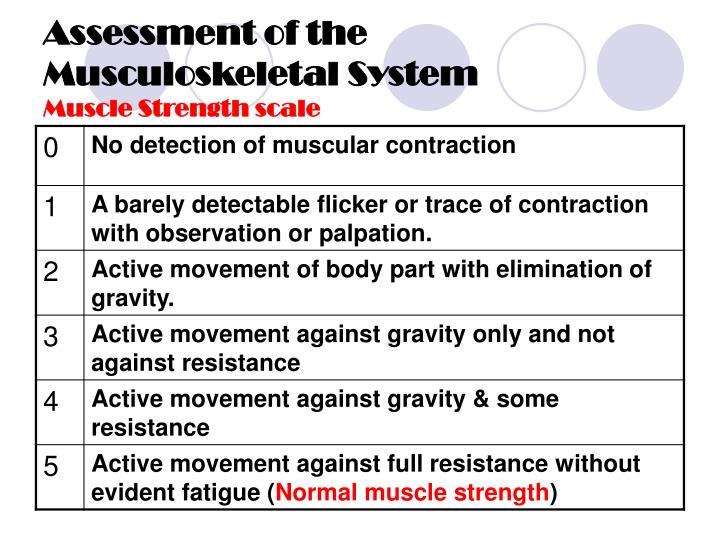
PPT Assessment of the Musculoskeletal System PowerPoint Presentation
Sample focused interview questions to include during a subjective assessment of the musculoskeletal system are contained in Table 13.4a. The first question of the musculoskeletal interview is based on the six most common symptoms related to musculoskeletal disease. [1] Table 13.4a Focused Interview Questions Related to the Musculoskeletal System

PPT Assessment of the Musculoskeletal System PowerPoint Presentation
Health Assessment: Musculoskeletal System- Nursing SkillsFREE Nursing School Cheat Sheets at: http://www.NURSING.comGet the full lesson on musculoskeletal as.
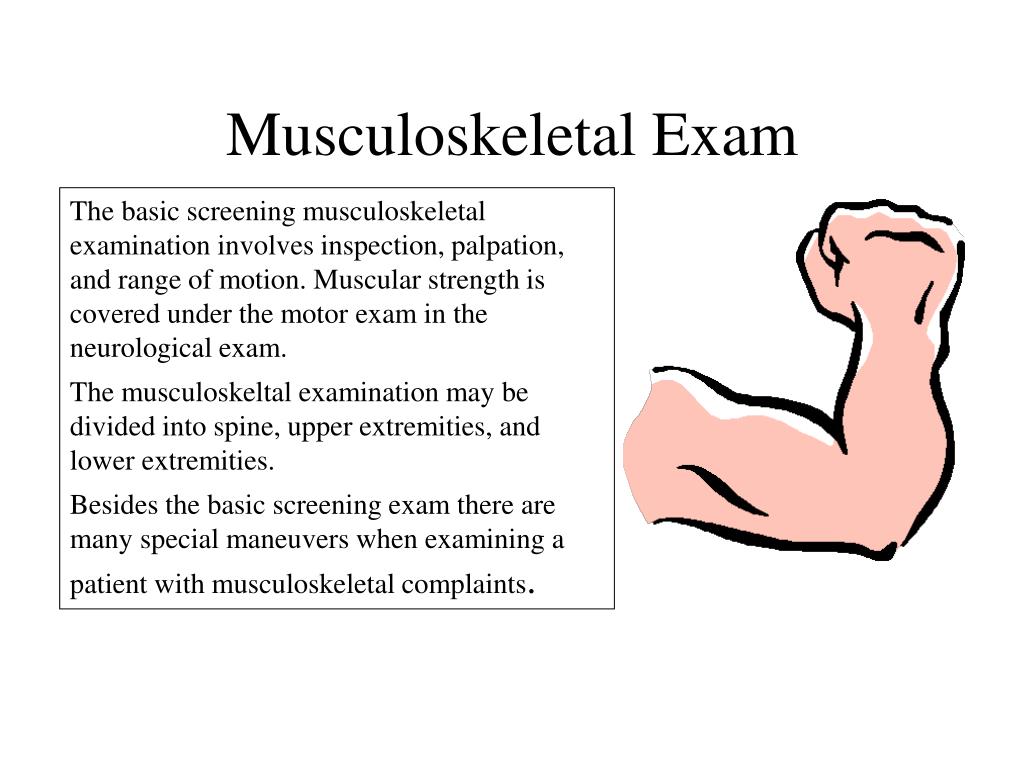
PPT Musculoskeletal Exam PowerPoint Presentation ID152673
Document the assessment findings and report any concerns according to agency policy. This page titled 13.6: Checklist for Musculoskeletal Assessment is shared under a CC BY-SA 4.0 license and was authored, remixed, and/or curated by Ernstmeyer & Christman (Eds.) ( OpenRN ) via source content that was edited to the style and standards of the.

Musculoskeletal assessment Nursing school tips, Health assessment
This chapter provides a comprehensive overview of the assessment of a patient's musculoskeletal system. The chapter adopts a systematic approach to holistic patient assessment including history taking, examination, clinical investigations, and use of patient-reported outcome measures.
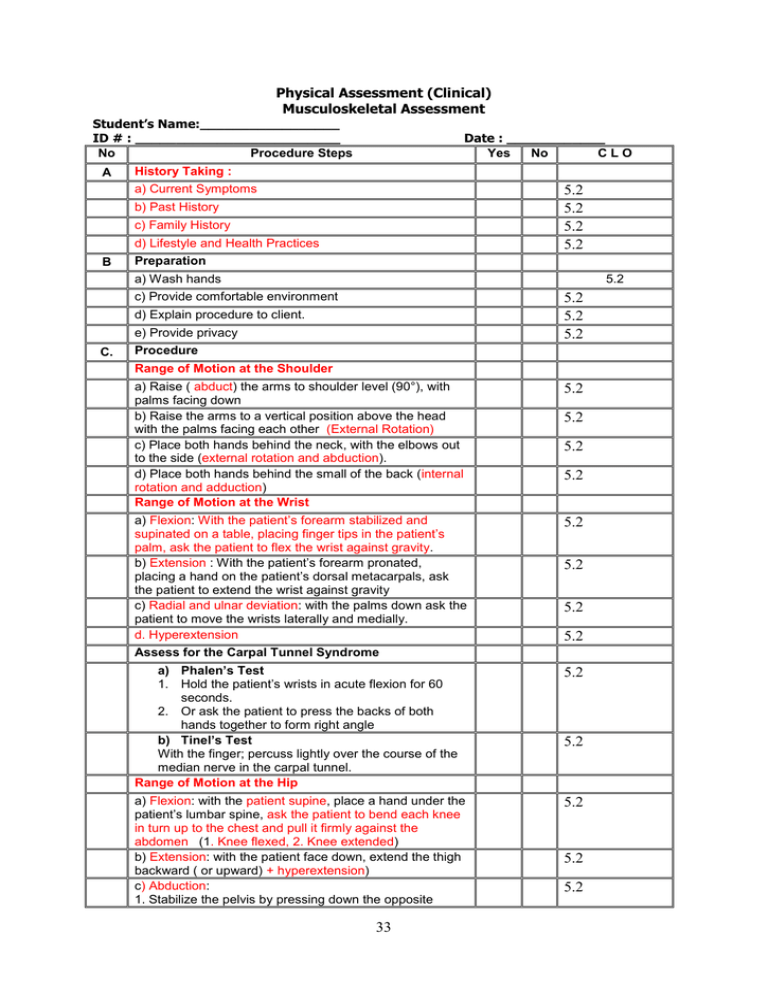
Musculoskeletal Assessment
The screening musculoskeletal examination (SMSE) is designed to provide an introduction to the physical assessment of musculoskeletal structures and will enable you to recognize normal joint appearance and alignment, the spectrum of normal joint range of motion and will help you recognize basic abnormalities of musculoskeletal structure and func.
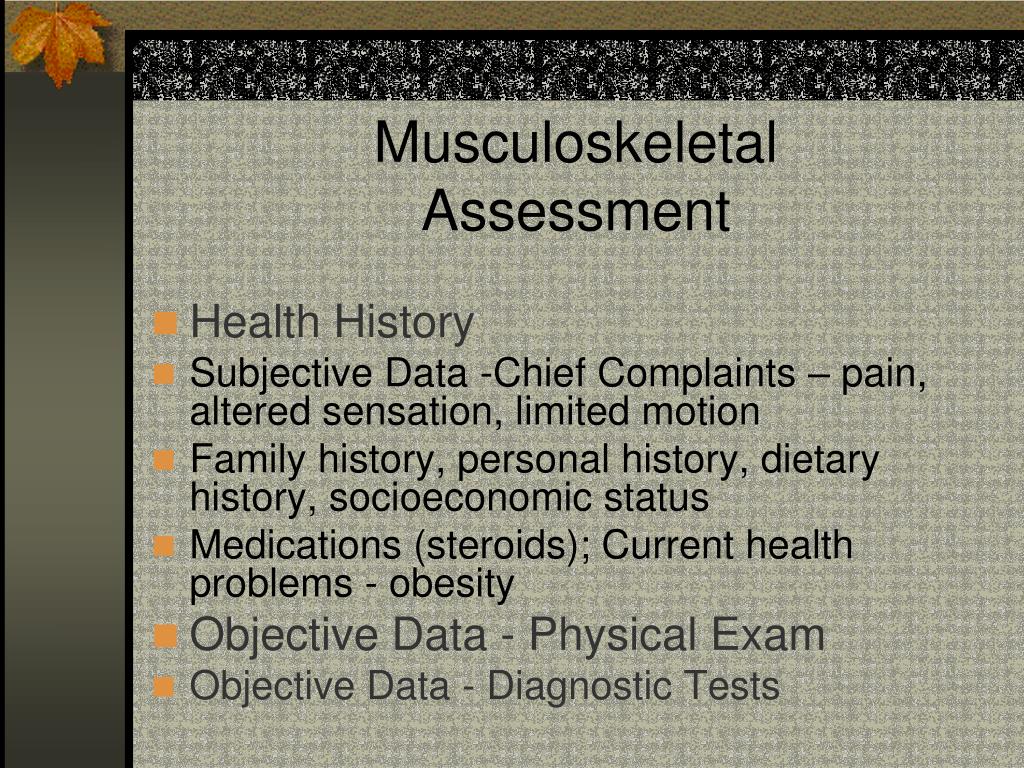
PPT Assessment of Musculoskeletal System PowerPoint Presentation
The methods of assessment for the musculoskeletal system include inspection and palpation. There are also specialty tests for range of motion and muscle strength and tone.

standardized musculoskeletal examination procedures. Note The
1. Collaborate with the physical and occupational therapists to perform a complete musculoskeletal assessment, including functional status, as needed. Health Promotion and Maintenance 2. Explain how physiologic aging changes of the musculoskeletal system affect care of older adults. Psychosocial Integrity 3.